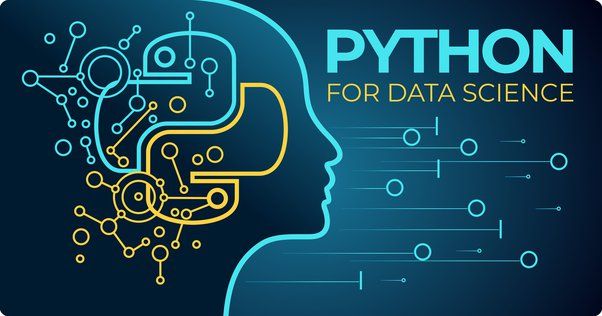
Numpy Tutorial: Embarking on a Data Science Journey With Python
Data science has revolutionized numerous industries, empowering us to extract invaluable insights from vast amounts of data. Python, with its versatility and extensive libraries, has emerged as the language of choice for data analysis and scientific computing.
Among these libraries, NumPy stands out as a foundational tool for efficient data manipulation and numerical computations. In this comprehensive tutorial, we will take our first steps into the realm of data science with one of the best data science tools, NumPy, delving into its powerful features and understanding how it can revolutionize complex data operations.
What is NumPy?
NumPy, short for Numerical Python, is an open-source Python library that provides a robust array-based computing capability. Its key offering is a high-performance multidimensional array object, along with a vast collection of functions for efficient mathematical operations on these arrays.
NumPy serves as the bedrock for numerous scientific and data analysis libraries in Python, making it an indispensable tool for anyone working with data.
Installation and Setup
Before we embark on our NumPy journey, let's ensure that we have it properly installed. NumPy can be easily installed using Python's package manager, pip, by executing a simple command: `pip install numpy`. Once NumPy is successfully installed, we can proceed with exploring its remarkable features.
Array Creation and Manipulation
The core component of NumPy is the ndarray, a powerful N-dimensional array object that facilitates the storage and manipulation of large arrays of homogeneous data.
We can create NumPy arrays using diverse techniques, such as converting Python lists, employing built-in functions, or reading data from files. Understanding the array creation process is vital for effective data analysis.
Array Operations and Manipulation
With NumPy arrays at our disposal, we can perform an array of operations and manipulations. NumPy provides an extensive suite of functions and methods to reshape arrays, slice and dice data, concatenate arrays, and even split arrays into smaller subsets.
Additionally, we can apply mathematical operations to arrays, such as element-wise addition, subtraction, multiplication, and division. Broadcasting, a powerful feature of NumPy, enables efficient computation between arrays of different shapes.
Harnessing Universal Functions (ufuncs)
Universal functions, or ufuncs, form the building blocks of many NumPy operations. These functions operate element-wise on arrays, enabling fast and vectorized computations.
NumPy boasts a wide array of ufuncs, encompassing mathematical functions, trigonometric functions, statistical functions, and much more. Gaining proficiency in ufuncs and understanding their efficient usage can significantly accelerate data analysis tasks.
Advanced Indexing and Slicing Techniques
NumPy provides an array of indexing and slicing techniques, empowering us to access and manipulate specific elements or subsets of arrays. We can employ integer indexing, boolean indexing, and even fancy indexing to extract the desired data. These techniques, coupled with potent array operations, enable us to seamlessly handle and extract insights from large datasets.

Aggregations and Statistical Analysis
Data analysis often entails computing summary statistics and aggregations over arrays. NumPy simplifies this process through its built-in functions for computing the mean, median, standard deviation, variance, and other essential statistical measures. These functions operate efficiently on arrays, making them the preferred choice for handling and analyzing substantial datasets.
File Input and Output with NumPy
NumPy offers convenient methods to read data from files and write data to files. We can store NumPy arrays in binary format, which boasts exceptional efficiency in terms of storage and speed.
Moreover, NumPy provides functions to load and save arrays in text format, facilitating seamless data exchange with other software tools.
Mastering Advanced Topics: Broadcasting and Vectorization
To unlock the full potential of NumPy and other data science tools, it is crucial to grasp advanced topics such as broadcasting and vectorization.
Broadcasting allows for performing operations on arrays with different shapes, leading to concise and efficient code.
Vectorization leverages NumPy's array operations to replace traditional for-loops, resulting in faster computations and improved performance.
Final Words
Congratulations! You have taken your first strides into the exhilarating world of data science using NumPy and other data science tools.
Throughout this tutorial, we have explored the foundational concepts of array creation, manipulation, and mathematical operations. We have dived into universal functions, indexing, slicing, aggregations, and file input and output. Equipped with this knowledge, you are now well-equipped to handle large datasets and tackle complex computations with ease.
NumPy serves as the bedrock of data science, paving the way for more advanced libraries like pandas, matplotlib, and scikit-learn. As you continue your journey, remember to tap into the wealth of resources available, such as the official NumPy documentation, online tutorials, and vibrant coding communities.
With NumPy and other powerful data science tools, you are poised to become a proficient data scientist. Embrace the array-based computing prowess of NumPy and unlock the full potential of your data analysis projects. Let NumPy be your guiding light as you embark on transformative data-driven endeavors!
Appreciate the creator